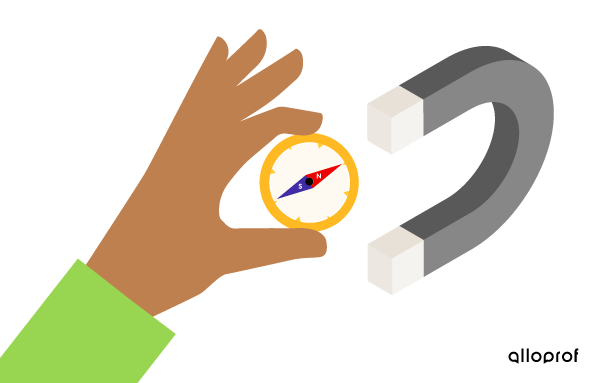Hematite (iron ore) is attracted by magnets.
Fluorite is a non-magnetic substance. It is not attracted by magnets.
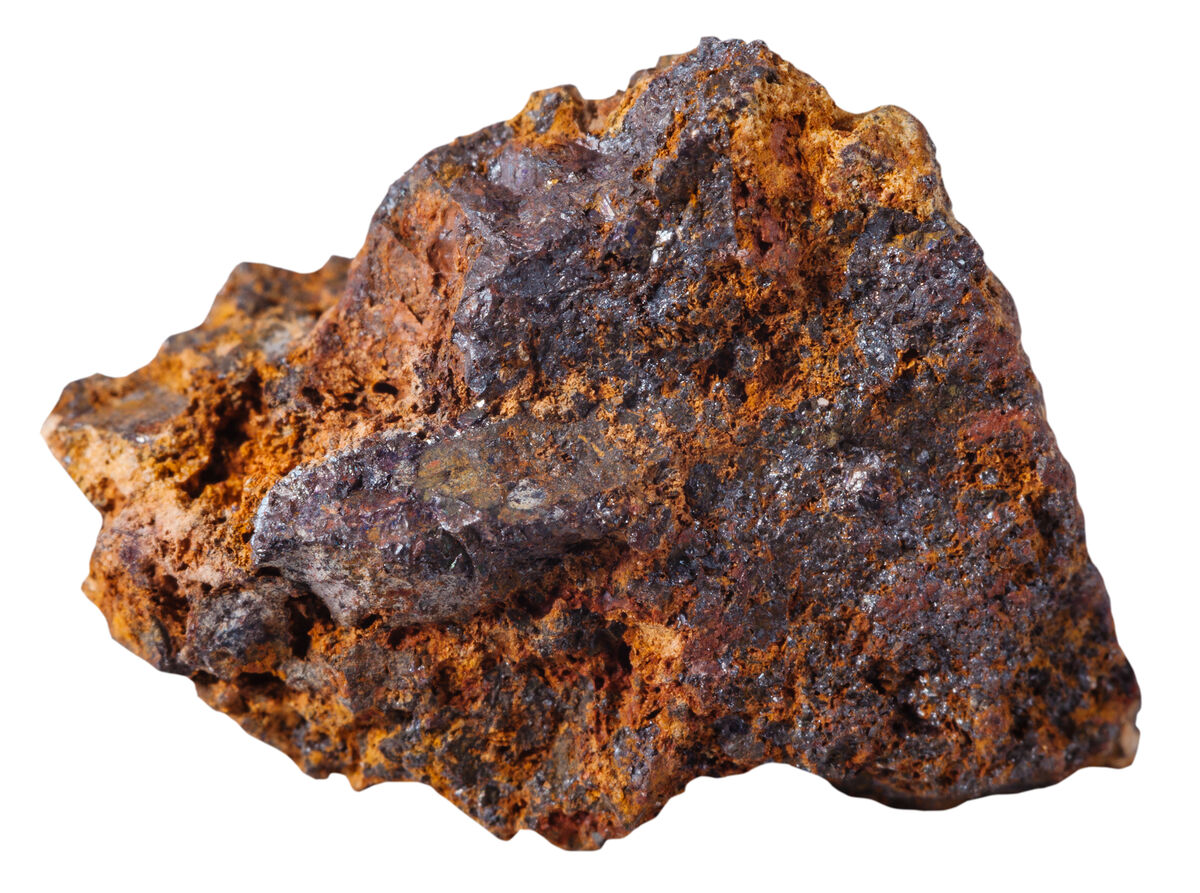
vvoe, Shutterstock.com
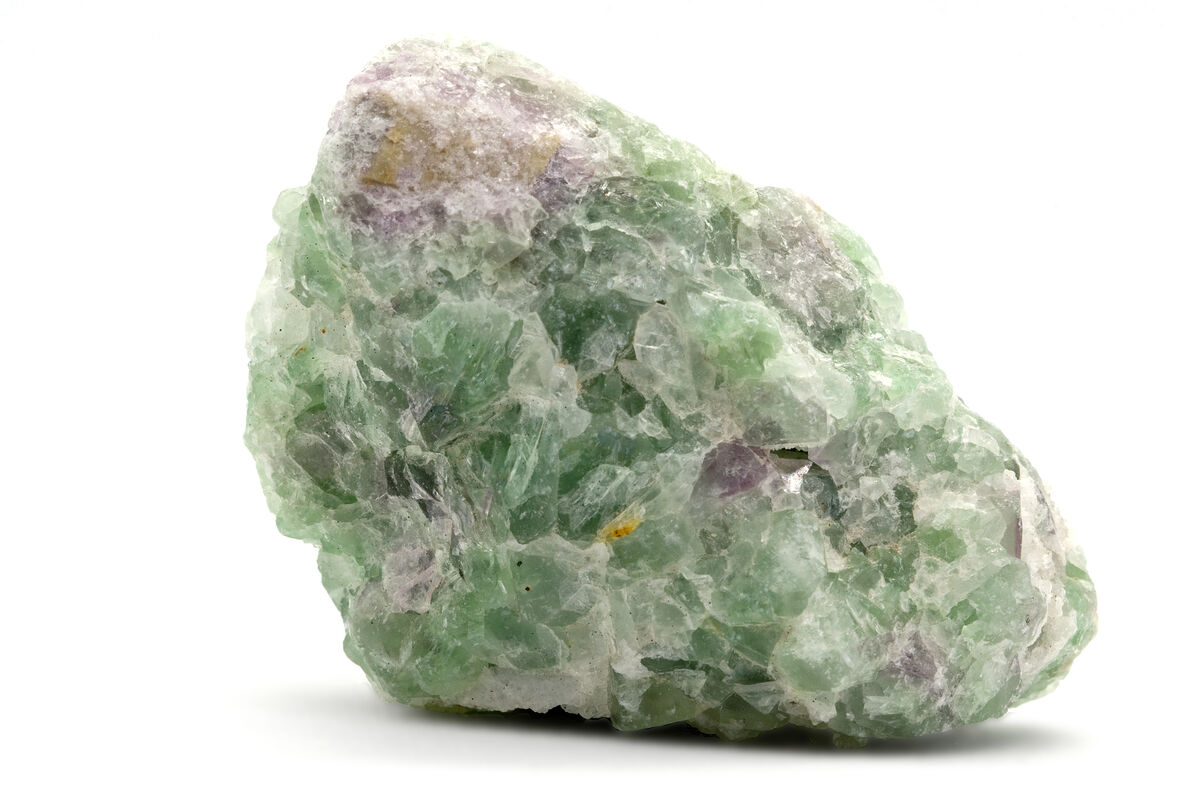
igsin, Shutterstock.com
The magnetism of a substance can be tested practically by bringing it close to a magnet.
A magnet is an object or device that has magnetic forces able to repel or attract certain objects. Magnets are can be made of iron |\text{(Fe)},| cobalt |\text{(Co)},| nickel |\text{(Ni)}|, or a mixture of these metals.
Although their shape and size vary, magnets always have a north pole and a south pole.
The north pole of a magnet is the pole that naturally points towards the Earth's geomagnetic north pole (near the Earth's geographic north pole). On the magnet, it is often identified by the letter N and the colour red.
The south pole of a magnet is opposite to the north pole. On the magnet, it is often identified by the letter S and the colours blue ou white. It can also have no colour at all.
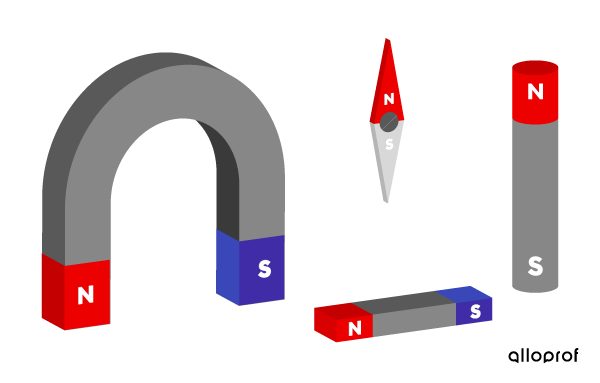
All around a magnet, magnetic forces exert an effect on other magnets nearby. This invisible area bounding the range of a magnet is called the magnetic field.
The magnetic field of a magnet cannot be seen with the naked eye, but the attraction and repulsion of tow poles can be observed:
- There is an attraction between two magnets when different poles are close to each other;
- There is a repulsion between two magnets when two like poles are close to each other.
The different poles (north and south) of these two magnets attract each other. These magnets attract each other.

The like poles (north-north or south-south) of these two magnets repel each other. These magnets undergo repulsion.
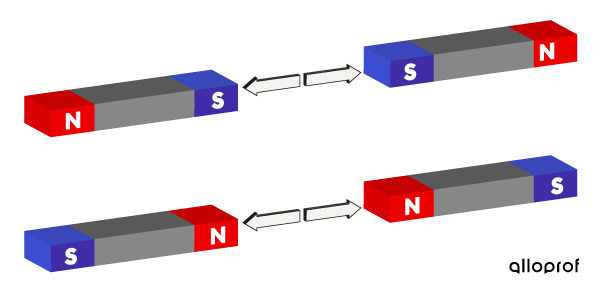
Since the needle of a compass is a magnet, observing its behaviour in the vicinity of another magnet allows the identification of its magnetic poles.
Here is a U-shaped magnet with unidentified poles.
Bring a compass to one end of the U-shaped magnet and observe the needle’s behaviour.
The north pole of the compass is attracted to that end of the U-magnet.
Since their is an attraction, we can say that this side of the U-shaped magnet is definitely a south pole (north-south attraction).
Since a magnet always has a north pole and a south pole, the other end of the U-shaped magnet is inevitably a north pole.
